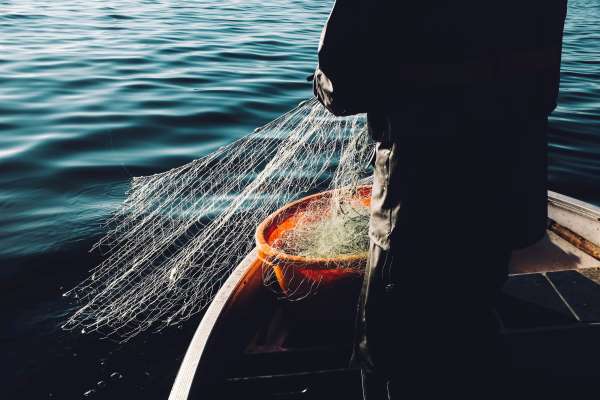Fisheries are essential industries in Africa for the economy and to feed families. They provide jobs for poorer coastal populations. Fish also account for a more significant proportion of people’s diet, with about 200 million Africans eating it regularly. So, here are a few ways to increase sustainable fishing efforts.
1. Limit Fishing Times and Areas
One way to prevent overfishing is to only fish for certain species during a particular time of the year. For example, people in the Philippines base times off tide and moon cycles. When fishing, they only catch what they need to feed themselves and the community.
Also, they prohibit fishing in certain areas, such as coral reefs. This can help protect vulnerable populations, like sea turtles. In addition, avoid areas with essential predators, such as sharks and tuna. These species help maintain local ecosystems.
Other marine life is endangered today due to increased ocean temperatures. In fact, New York’s registered lobster landings dropped 97.7% from 1996 to 2014.
2. Increase Management Measures
To maintain fish production, there needs to be better management of companies. So, all levels of government need to be involved. For example, in the U.S, the National Oceanic and Atmospheric Administration (NOAA) Fisheries regulate water farther out, and local municipalities manage areas closer to shore.
There are also international agreements for organizations that share economic interests. When a nation joins the agreement, they follow the regulations, including catch limits and the types of gear used.
3. Enforce Traceability Standards
These standards require vendors to label their products with information about where the fish comes from. It should account for all stages – from production and processing to distribution. This includes details like where the marine life was caught and the tools used.
Another critical factor is how the fish were cleaned and prepared before distribution. Holding supply chains accountable increases transparency and prevents illegal fishing. It also helps consumers learn where their food is coming from.
4. Work With Programs Supporting Education and Initiatives
There needs to be proper funding to increase sustainable efforts. In 2005, the World Bank created a program to encourage fisheries to contribute to sustainable growth and food scarcity. They provided knowledge and products to employ governing strategies. Also, the West Africa Regional Fisheries Program invested $120 million in a pipeline covering coastal West Africa.
Here are some more programs that promote eco-friendly fishing habits:
- Aquaculture Stewardship Council
- Fisheries Innovation Scotland
- Institute for Fisheries Resources
- International Collective in Support of Fishworkers
- International Seafood Sustainability Foundation
5. Improve Fish-Processing Methods
We need to minimize loss during the production process to prevent reliance on overfishing. So, invest in cold storage units and automatic control systems. These can help keep fish fresh and improve sanitation. Better preparation of the fish prevents income loss and improves food quality as well.
Even before the production process, it’s essential to practice eco-friendly fishing methods. One common one is hook-and-line. It uses circle hooks that minimize habitat damage. You can catch species like snapper or grouper with this method. Trolling enables you to drag multiple lines behind a vessel at once to increase the catch.
Here are a few more sustainable methods:
- Trawling: It’s when the net is behind a fishing boat to catch shrimp. This helps minimize the accidental catching of turtles or sharks.
- Long-lining: It includes miles of lines connected by a set of buoys. These are attached along the anchor line and remain in the water for an extended time.
- Pot fishing: This technique involves cages submerged on the ocean floor and connected by a rope and buoy. They are usually used for catching crabs or sea bass.
6. Improve Aquaculture Industry
Aquaculture is the breeding, rearing, and harvesting of fish. This strategy can increase the local food supply and prevent overfishing. Also, it can reduce reliance on foreign shipments. It can be hard to regulate foreign vessels, and some areas lack boats or personnel to monitor them.
In addition, education on sustainable farming practices can get local villagers on board. This includes things like crop rotation and minimal tillage.
How to Improve Fishing Methods to Help Marine Life
Helping to protect marine life has many advantages for humans. It provides a food source and strengthens the economy. Eco-friendly fishing practices are vital in Africa. Fortunately, there are many ways to increase sustainability through regulations and efficient fishing methods.
Bio: Jane is an agriculture and environmental journalist and the founder and editor-in-chief of Environment.co, where she covers sustainability and eco-friendly living.








